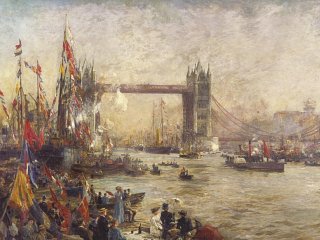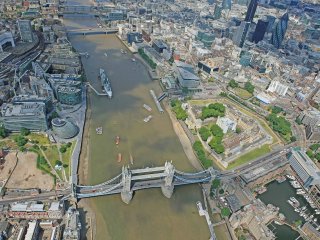What is the Pool of London?
For 130 years, Tower Bridge has stood as the physical and symbolic gateway to London, spanning the historic heart in a stretch of the Thames that is known as the Pool of London.
The Pool starts at London Bridge and flows downstream beneath Tower Bridge, to where the river bends to the north between Rotherhithe and Wapping. It is divided into two parts, the Upper Pool and the Lower Pool. The Upper Pool runs from London Bridge and the Cherry Garden Pier, in Bermondsey. The Lower Pool consists of the section between Cherry Garden Pier to Limekiln Dock, Limehouse.
From Tower Bridge's high-level Walkways, you can see the entire Pool of London, 33.5 metres above road level. It's quite an unforgettable sight.






